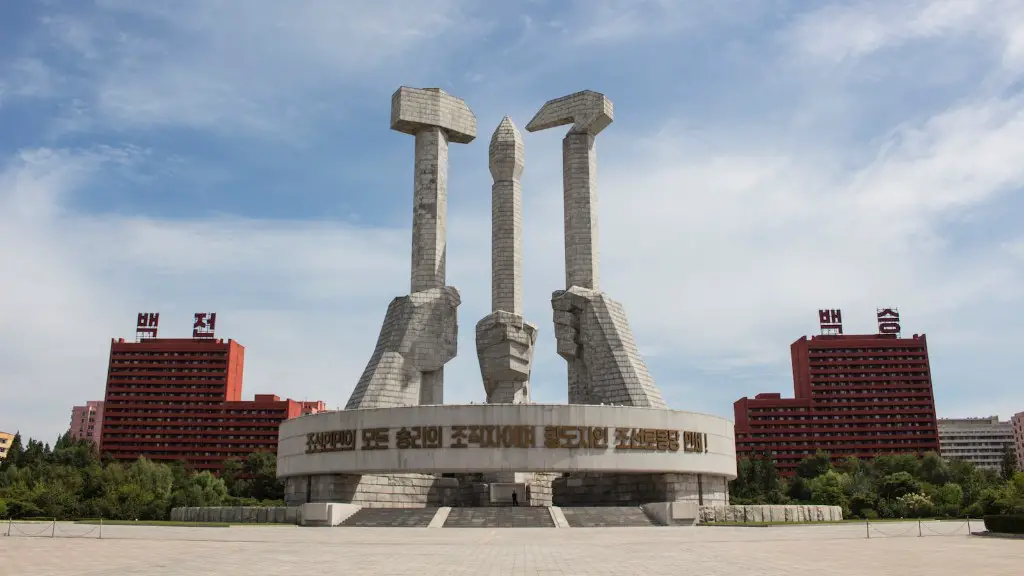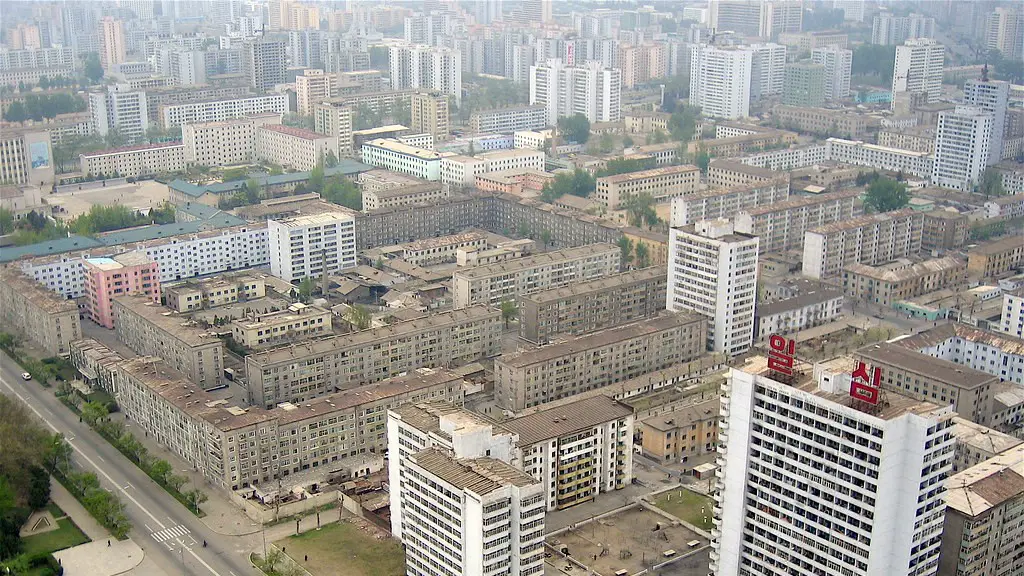Historical Context
North Korea and its nuclear ambitions have long been a source of tension and fear, not only in the region but around the world. It began in the mid 1950s when North Korea was supported militarily and financially by both the Soviet Union and China, with the promise that they would receive aid to develop nuclear technology. At this time, the Cold War was in full swing, with both sides competing to develop powerful new weapons that could be used as a deterrent against the other. In the midst of this, North Korea sought to build its own nuclear weapon and in 1967 signed the Treaty on the Non-Proliferation of Nuclear Weapons. However, they continued to pursue their nuclear ambitions in secret, and by the late 1980s had made rapid progress in the development of the technology.
Transparency and Oversight
In 1994, in an effort to bring some transparency and oversight to North Korea’s nuclear activities, the US and North Korea signed the Agreed Framework. This framework established an International Atomic Energy Agency (IAEA) inspection regime, which provided regular and prompt access to North Korea’s nuclear facilities. The agreement also required North Korea to freeze and eventually eliminate its existing nuclear programs. This was viewed as a significant diplomatic step forward, as it provided both sides with a way to monitor and verify North Korea’s nuclear activities and avoid a nuclear disaster. However, the agreement was never fully implemented and in 2002 the US president George W. Bush referenced North Korea as part of the “axis of evil”. This caused tensions between the two countries to once again reach an all-time high.
Post-Agreement Activities
In the aftermath of the Agreed Framework, North Korea continued to expand its nuclear capabilities. This included the construction of several uranium enrichment plants and the testing of multiple nuclear weapons. It is believed that North Korea has now acquired enough enriched uranium to produce around 20 nuclear weapons. In response, the United Nations Security Council imposed a series of economic sanctions in 2006 and 2009, but these have not managed to contain or stop North Korea’s nuclear program. This has caused a great deal of concern among international observers, as North Korea’s nuclear ambitions have become increasingly unpredictable and difficult to contain.
International Efforts
In recent years, there have been numerous attempts by other countries to bring North Korea back to the negotiating table. This includes direct talks between the US and North Korea, in addition to the use of various economic sanctions and other diplomatic measures. Unfortunately, these efforts have not yet achieved any meaningful progress, and North Korea remains defiant in the face of international pressure. The failure to come to a lasting agreement has resulted in a tense stand-off, with both sides unwilling to make the necessary concessions. As a result, North Korea continues to develop its nuclear arsenal and the international community is now facing the real possibility of a nuclear conflict on the Korean peninsula.
Economic Motivations
In addition to its pursuit of military power, it is believed that North Korea’s nuclear ambitions are also driven by economic factors. North Korea is an isolated, impoverished nation and it is believed that the acquisition of nuclear technology has been viewed as a way to attract foreign investment and global recognition. This is reflected in North Korea’s continued defiance of international sanctions, as well as its efforts to bypass them. As a result, North Korea continues to be a source of great concern to the international community and efforts to bring peace and stability to the region remain elusive.
Global Consequences
The potential for a nuclear conflict in the Korean peninsula is a worrying prospect and has far-reaching implications for the global community. The spread of nuclear technology to hostile governments and failed states would be a major security threat and could lead to an arms race, as other countries seek to acquire the same level of deterrence. In addition, there is the danger of nuclear materials being sold to terrorist groups, which would represent an even greater threat to international security. Therefore, it is of paramount importance that the international community remains vigilant and works together to ensure the safe and responsible use of nuclear technology.
Regional Dynamics
North Korea’s nuclear ambitions have had a profound impact on regional geopolitics. In particular, South Korea has been a vocal critic of North Korea’s nuclear weapons and has sought to distance itself from its northern neighbor. This has further exacerbated tensions between the two Koreas, which had already been strained due to a long history of mistrust and hostility. South Korea has also been an active participant in international efforts to contain North Korea’s nuclear ambitions and has sought to increase dialogue and cooperation with its northern neighbor. However, this has had mixed success and North Korea remains determined to acquire and maintain its nuclear capabilities.
Diplomatic Solutions
The best hope for a resolution to the current crisis lies in diplomatic solutions. In recent years, North Korean leader Kim Jong Un has indicated some willingness to engage with the international community and negotiate a way forward. This has resulted in a series of high-level talks between the US and North Korea, in addition to other diplomatic initiatives. While the results of these efforts have been limited thus far, there is a growing sense of optimism that a lasting resolution can be achieved. This will require a concerted effort from the international community and a commitment to diplomatic dialogue, something that has thus far been lacking.
Technology and Security
The use of nuclear technology represents a serious security risk and it is essential that we have proper safeguards in place to prevent its misuse. This includes the development of effective technologies to detect and deter nuclear weapons, such as nuclear detection sensors and drone technology. In addition, there needs to be increased cooperation between countries to share intelligence and monitor the activities of hostile states. This is especially important in the case of North Korea, which has become increasingly unpredictable and is willing to flout international norms in pursuit of its own agenda.
Conclusion
North Korea’s progress in nuclear technology is a cause for alarm and a immediate resolution is needed to prevent a potential conflict. The international community must come together and work towards a peaceful solution that respects the sovereignty of North Korea, while also addressing the concerns of its neighbors. This will require a multifaceted approach that involves both economic sanctions and diplomatic dialogue. It will also require a concerted effort to implement effective technologies and safeguards, as well as increased intelligence sharing. It is only through these combined efforts that the situation can be brought back under control and a lasting resolution achieved.


